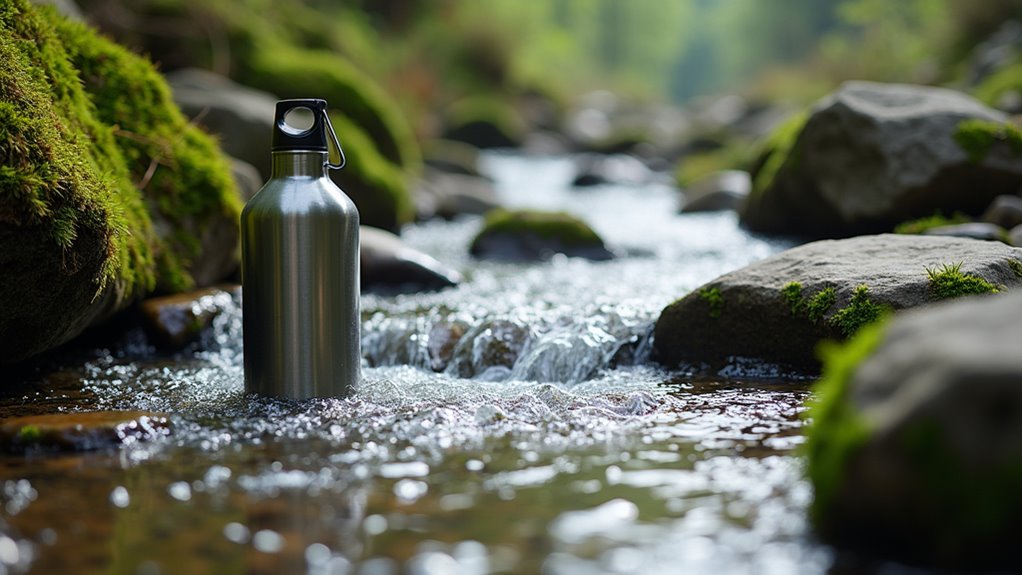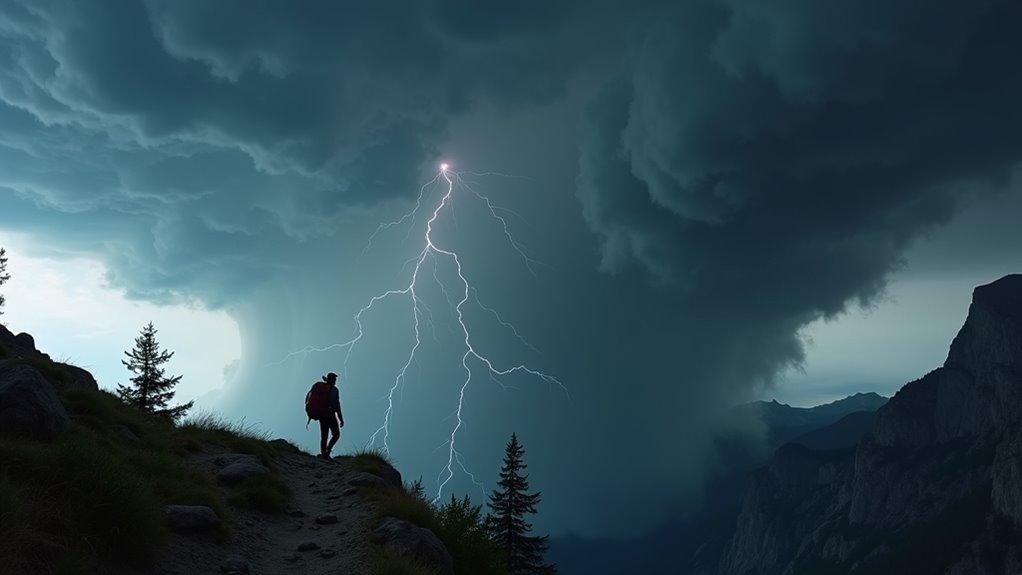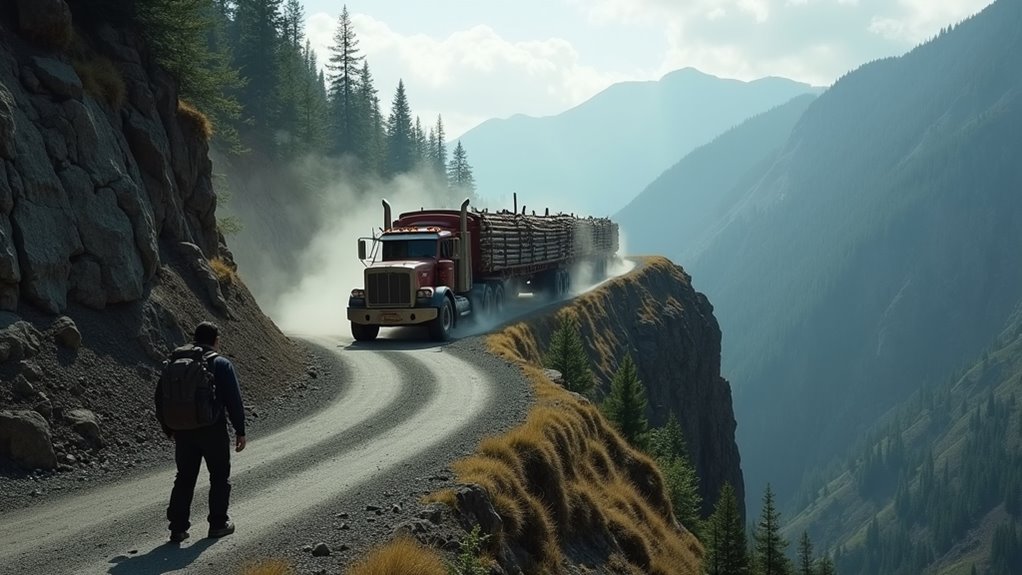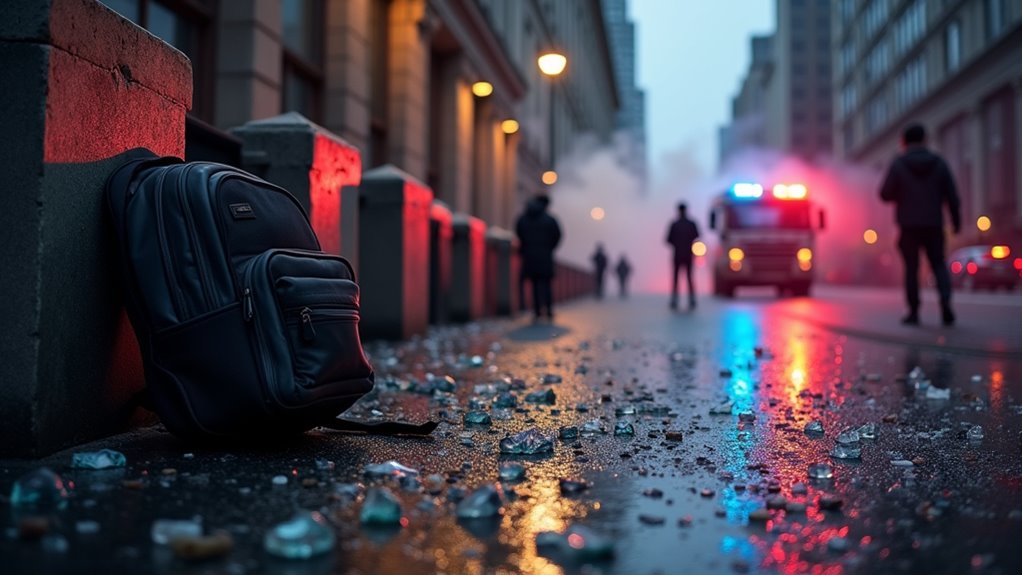Physical Address
304 North Cardinal St.
Dorchester Center, MA 02124
Physical Address
304 North Cardinal St.
Dorchester Center, MA 02124

Protect yourself from the 10 most dangerous backpacking threats that seasoned travelers never talk about—number 7 will shock you.
Most backpackers don’t realize that statistically, you’re more likely to face danger from fellow humans than wild animals during your adventures. While bear encounters make headlines, theft, transportation accidents, and medical emergencies in remote locations pose far greater risks to your safety and well-being. Understanding these hidden dangers—and knowing how to avoid them—can mean the difference between an unforgettable journey and a trip that ends in disaster. Here’s what you need to stay protected out there.

While most wildlife encounters during backpacking trips are harmless and even magical, you’ll want to stay alert for potentially dangerous situations. Bears pose the greatest threat in many regions, so store food properly in bear canisters or hang it high between trees. Make noise while hiking to avoid surprising animals, and never approach or feed wildlife.
Mountain lions rarely attack but can be territorial. If you encounter one, maintain eye contact, appear large by raising your arms, and back away slowly. Don’t run or turn your back.
Venomous snakes prefer avoiding humans, but watch where you step and place your hands. Wear boots and use a flashlight during nighttime bathroom breaks.
Most animal encounters end safely when you respect their space and follow basic precautions. Consider practicing wildlife safety awareness through family-friendly activities like river rafting, where guides often teach outdoor safety principles in controlled environments.
Even with smartphones and GPS devices, you can still find yourself completely disoriented on the trail when technology fails or batteries die. That’s why you’ll want backup navigation tools like a compass and topographic map – and more importantly, know how to use them before you need them.
Practice reading terrain features and identifying landmarks while hiking familiar trails. Learn basic triangulation techniques to pinpoint your location using visible peaks or structures.
Always inform someone about your planned route and expected return time.
If you do get lost, stop moving immediately. Use the STOP method: Sit, Think, Observe, Plan. Retrace your steps to the last known location if possible.
Staying calm and methodical beats panicking and wandering deeper into unfamiliar territory.
Remember that proper trip preparation includes checking weather conditions, researching your route thoroughly, and ensuring all your navigation equipment is functioning before you head out.

Beyond navigation challenges, another serious threat lurks in seemingly pristine wilderness settings: contaminated water and unsafe food. You can’t always trust crystal-clear mountain streams or lakes – they often harbor harmful bacteria, parasites, and viruses that’ll leave you severely ill miles from help.
Crystal-clear wilderness water can harbor dangerous bacteria, parasites, and viruses that cause severe illness when you’re miles from medical help.
Always purify water through boiling, filtration, or purification tablets before drinking. Don’t rinse dishes with untreated water either. Pack lightweight water treatment options that fit your trip duration.
A reliable camping water filter is essential gear that can save your trip and your health when access to clean water sources becomes uncertain.
Food safety matters equally. Keep perishables cold, cook meat thoroughly, and store everything properly to prevent spoilage. When in doubt, throw questionable food out – it’s not worth the risk.
Trust your nose and eyes; if something looks or smells off, don’t consume it. Prevention beats dealing with food poisoning on the trail.
Although backpacking often takes you far from crowded cities, you’ll likely pass through tourist hotspots where thieves specifically target travelers with visible gear and obvious unfamiliarity with local areas. These criminals work in groups, using distraction techniques while accomplices grab your belongings.
Stay alert and protect yourself with these strategies:
You’re not paranoid for being cautious. Most backpackers travel safely, but preparation prevents you from becoming an easy target. Just as you’d carefully plan your winter camping foods for cold-weather survival, thorough preparation for urban safety situations can make the difference between a successful trip and a dangerous encounter.

While human threats pose one risk to backpackers, nature presents equally serious dangers that can catch you off guard. Flash floods can turn peaceful hiking trails into death traps within minutes, especially in desert canyons and low-lying areas. Lightning strikes pose real threats on exposed ridges and open terrain during storms. Hypothermia can develop quickly when you’re unprepared for sudden temperature drops, even in summer months.
Always check weather forecasts before heading out, and don’t ignore warning signs. Pack appropriate gear for changing conditions, including rain protection and extra layers. Know your escape routes and have backup plans. If severe weather approaches, seek shelter immediately rather than pushing forward.
Trust your instincts—if conditions feel dangerous, they probably are. Turn back when necessary. When storms do hit, having proper weather handling techniques can mean the difference between a manageable situation and a life-threatening emergency.
Finding safe, legitimate accommodation becomes essential when you’re tired after long days of hiking and enthusiastic to rest anywhere with a bed.
Unfortunately, scammers target exhausted backpackers who aren’t thinking clearly. You’ll encounter fake hostel listings, overpriced rooms that don’t match photos, and accommodations in dangerous neighborhoods.
Watch for these warning signs:
Always verify accommodations through multiple sources, read recent reviews, and trust your instincts.
When something feels off, find alternative lodging immediately.
For those who enjoy camping while cycling, carrying your own shelter eliminates accommodation scams entirely and provides complete control over your sleeping arrangements.

Once you’ve secured safe accommodation, getting around safely becomes your next priority. Transportation accidents pose real risks for backpackers, especially in developing countries with different safety standards.
Always research local transportation options beforehand. Avoid overcrowded buses, unlicensed taxis, and vehicles that look poorly maintained. Check that seatbelts work and doors close properly. Don’t get into vehicles with erratic drivers or those who’ve been drinking.
Motorbike rentals are particularly risky. If you must ride, wear a helmet and protective gear. Avoid night driving when visibility’s poor and drunk drivers are common.
For longer journeys, choose reputable bus companies with good safety records. Train travel’s often safer than road transport.
Keep emergency contacts handy and inform someone about your travel plans. If you’re planning adventure activities like glacier climbing, ensure you’re using proper transportation to reach trailheads and have reliable pickup arrangements.
Medical emergencies become exponentially more dangerous when you’re miles from proper healthcare facilities. What seems like a minor injury at home can quickly escalate into a life-threatening situation on remote trails. You won’t have access to emergency services, hospitals, or even cell phone coverage in many wilderness areas.
In the wilderness, a simple cut can become a deadly crisis when hospitals are days away and cell towers don’t exist.
Here’s what makes medical emergencies particularly dangerous in remote locations:
Always carry a thorough first aid kit and learn basic wilderness medicine before heading out. Consider bringing a satellite communicator for true emergencies when you’re completely off-grid. In hot weather conditions, heat-related illnesses like heat exhaustion and heat stroke pose additional serious risks that require immediate recognition and treatment to prevent fatal outcomes.

While most backpacking destinations are peaceful, you might find yourself traveling through regions experiencing political tensions or civil unrest. Stay informed by monitoring local news, government travel advisories, and embassy updates before and during your trip.
If you encounter protests or demonstrations, avoid these areas entirely—even peaceful gatherings can escalate quickly.
Keep your embassy’s contact information readily available and register with them when possible.
Maintain a low profile by dressing conservatively and avoiding political discussions with locals. Don’t wear clothing or carry items displaying political messages or national symbols.
If civil disturbances occur nearby, remain in your accommodation until it’s safe to leave.
Have an evacuation plan ready, including alternate routes to airports or border crossings.
Trust your instincts—if something feels unsafe, leave immediately.
Beyond external threats, your own body can become your biggest challenge when backpacking at high elevations or pushing physical limits. Altitude sickness strikes when you ascend too quickly, causing headaches, nausea, and potentially life-threatening complications.
Your body can become your worst enemy at altitude, where rapid ascent triggers dangerous symptoms that escalate from discomfort to life-threatening emergencies.
Meanwhile, overexertion can lead to dehydration, heat exhaustion, and injuries that’ll derail your adventure.
The good news? You can prevent most altitude and exertion problems with smart planning:
In tropical and subtropical regions where mosquito-borne diseases are prevalent, carrying mosquito nets becomes essential protection during overnight stops.
You’ve got the knowledge now—but knowledge means nothing if you don’t act on it. Those mountains won’t warn you about altitude sickness. That pristine stream won’t announce its parasites. Wild animals won’t text their location. The question isn’t whether you’ll face these dangers—it’s whether you’ll be ready when they find you. Pack smart, stay alert, trust your instincts. Your next adventure’s waiting, and now you’re prepared for whatever it throws at you.